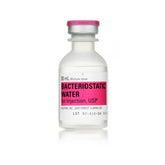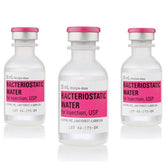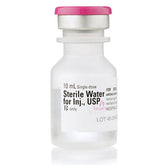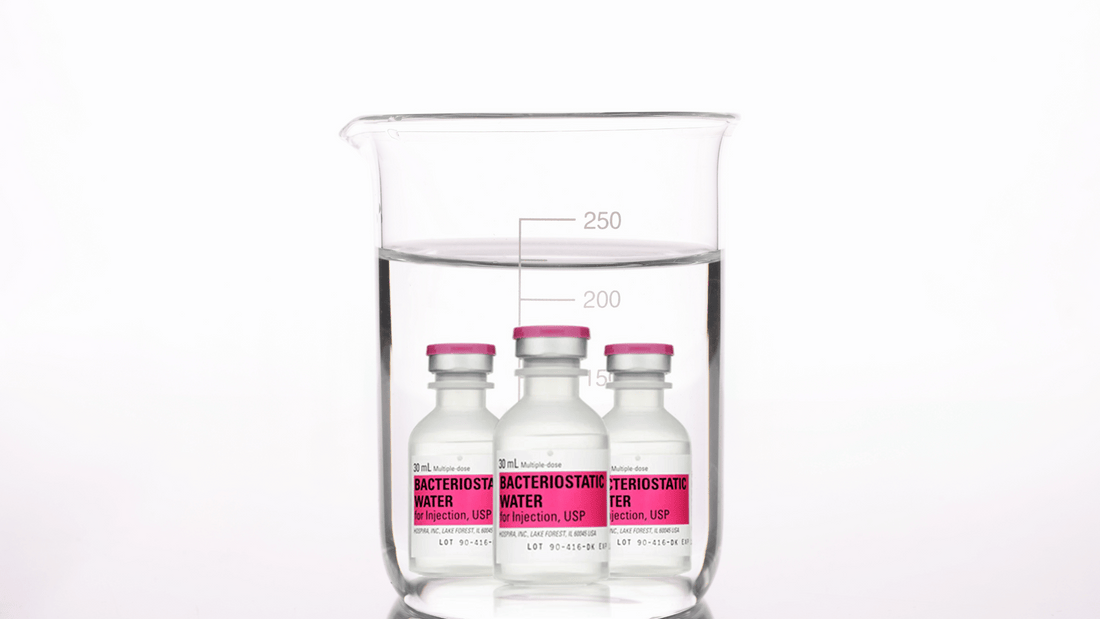Bacteriostatic water is a term you may encounter in a healthcare setting, specifically when it comes to injections. Its importance in maintaining safety standards in these contexts is paramount. This article will provide an in-depth look into bacteriostatic water, its availability, usage, potential side effects, and comparison with sterile saline.
Bacteriostatic water plays an integral role in pharmaceutical applications and aids in patient care. But what is bacteriostatic water, and why is it so crucial in healthcare settings? Let's delve into that.
Understanding Bacteriostatic Water
Bacteriostatic water is sterilized water that contains a bacteriostatic agent, usually benzyl alcohol. This water is primarily used to dilute or dissolve medications for injection, ensuring the injected substance remains uncontaminated by bacteria. The bacteriostatic agent effectively prevents bacterial growth, hence the term "bacteriostatic".
The use of bacteriostatic water is widespread in the medical field. Its versatility allows it to be used in a variety of procedures, ranging from intramuscular to intravenous injections. This is because it not only dilutes the drugs but also maintains their sterility over multiple uses.
Obtaining Bacteriostatic Water: Accessibility and Restrictions
One question that arises with this useful product is its availability to the public. Can you buy bacteriostatic water over the counter, like at a CVS? The answer is, it largely depends on regional regulations and store policies. Some locations may require a prescription for purchase.
The question of whether bacteriostatic water is a prescription-only product, again, varies by location. Some countries and states in the US mandate a prescription to purchase it, due to the potential misuse or improper administration. Always consult your local healthcare regulations or a healthcare professional for accurate information.
Bacteriostatic Water Versus Sterile Saline: Spotting the Difference
Understanding the difference between bacteriostatic water and sterile saline is crucial, as they serve different purposes in healthcare. Sterile saline, which is sterile saltwater, is often used for wound cleaning, contact lens rinsing, and certain types of injections. Unlike bacteriostatic water, sterile saline doesn't contain any bacteriostatic agents.
So, is one superior to the other? Not necessarily. The choice between sterile saline and bacteriostatic water depends on the specific medical situation. While bacteriostatic water is favored for maintaining sterility over multiple uses, sterile saline is preferred when a sodium chloride solution is required or when the presence of benzyl alcohol is undesirable.
Potential Bacteriostatic Water Side Effects
While bacteriostatic water plays an essential role in medication administration, it's crucial to be aware of its potential side effects. These could include local irritation, tissue damage, and in rare cases, systemic allergic reactions. However, most bacteriostatic water side effects occur due to the medication it's used to dilute rather than the water itself.
Patients should promptly report any adverse reactions or discomfort following an injection using bacteriostatic water. Despite its vital role in healthcare, the well-being of the patient should always be the top priority. Medical professionals are trained to handle such situations and can provide the necessary assistance or alternatives.
Reuse of Bacteriostatic Water: How Many Times Can it Be Used?
Bacteriostatic water's unique property is its ability to be used multiple times while maintaining sterility. This is due to the bacteriostatic agent, usually benzyl alcohol, that inhibits the growth of bacteria in the vial.
However, the limit to its reuse depends on several factors. These include the bacteriostatic water storage conditions, handling, and the period since its first use. As a general guideline, once punctured, a vial of bacteriostatic water should be discarded after 28 days. Always refer to the manufacturer's instructions and local guidelines for the most accurate information.
Bacteriostatic Water: Recap
Bacteriostatic water serves as an unsung hero in the world of healthcare, facilitating safer drug administration and playing a critical role in patient care. By understanding what bacteriostatic water is, its uses, availability, potential side effects, and the contrast to sterile saline, you are better equipped to engage in informed discussions with your healthcare providers.
Remember, when it comes to health, always consult a healthcare professional for advice tailored to your situation. This article should serve as a guide, but it's not a substitute for professional medical advice.











